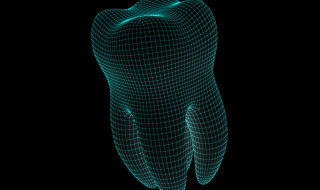
Chloe Bradbury explains how 3D printing could benefit your practice and how it will affect the dental industry.
Printing in 3D is a hot topic. You will hear the term referred to in a myriad of different contexts. You will also be told how 3D printing is about to revolutionise the very world we live in. Almost every day I come across a news reference to the fact we are on the brink of a new 3D printing age – there seems to be little they cannot print, or certainly hope to print, using these miraculous machines. But how is 3D printing going to affect dentistry?
Printing in dentistry
Well rather dramatically if some are to be believed. The dental world is certainly a world that lends itself to 3D printing – after all dentists are so often having custom-made pieces produced; bridges, crowns, and orthodontic pieces amongst them.
Some labs are already embracing the 3D printing age and the speed at which such high-tech equipment will allow them to work, and it may not be just labs who could benefit from having a 3D printer.
Many dental practices now offer oral scanning and, when combined with CAD/CAM and 3D printing, there is the potential to offer an incredibly fast transition from initial consultation to oral appliance fitting.
For dentists and orthodontists themselves there is the opportunity of creating extremely precise and speedily produced wax-ups using only the digital files on a patient. The benefits of this are obvious. There is no unpleasant impression taking for the patient, the time they need to be in the chair is significantly reduced, and there is no need for specialist waste disposal, all in all a more efficient process.
Printing in 3D also allows dentists to create stone models and biocompatible guides with little inconvenience to the patient. The use of digital information to create wax-ups and appliances also dispenses with the need to store plaster stone models resulting in a lot of space saved.
Smoother and faster production
Further to this, 3D printers also potentially offer dentists and orthodontists the opportunity to create orthodontic appliances, delivery and positioning trays, clear aligners and retainers in-house using medical grade material.
For dental labs a 3D printer could mean a much smoother, much faster production and equally a diminished waiting time for both the patient and the dentist.
Don’t be put off 3D printing by the size you imagine a 3D printer would need to be. There are now printers available that take up as little room as a desktop. You can also produce up to 20 models on the smallest size of printer at one time.
Like everything at the cutting edge of technology, these printers are not cheap, but they are no longer as prohibitively expensive as they once were. They are certainly finding their place in industry, becoming more commonplace, and their price is adjusting according to that.
Printing in 3D is a fantastically exciting development, one which many believe will change the face of dentistry permanently and advantageously.
For more information regarding the digital side of dentistry, your website and how it can transform your business, call Digital Results, a company specialising in designing and developing websites and digital strategies for dental practices and companies, by email: [email protected], phone: 01920 444 797, web: www.digital-results.com and Twitter: @csouthey.


